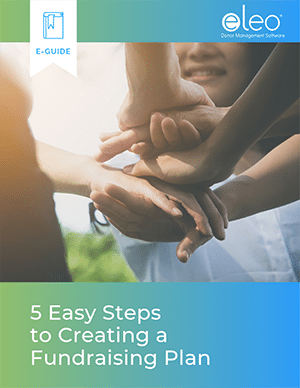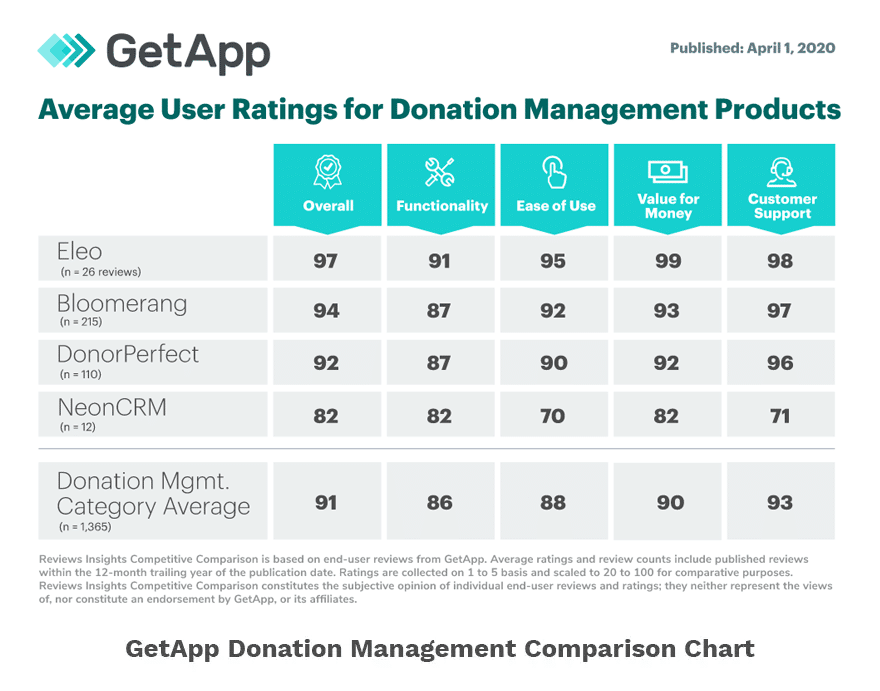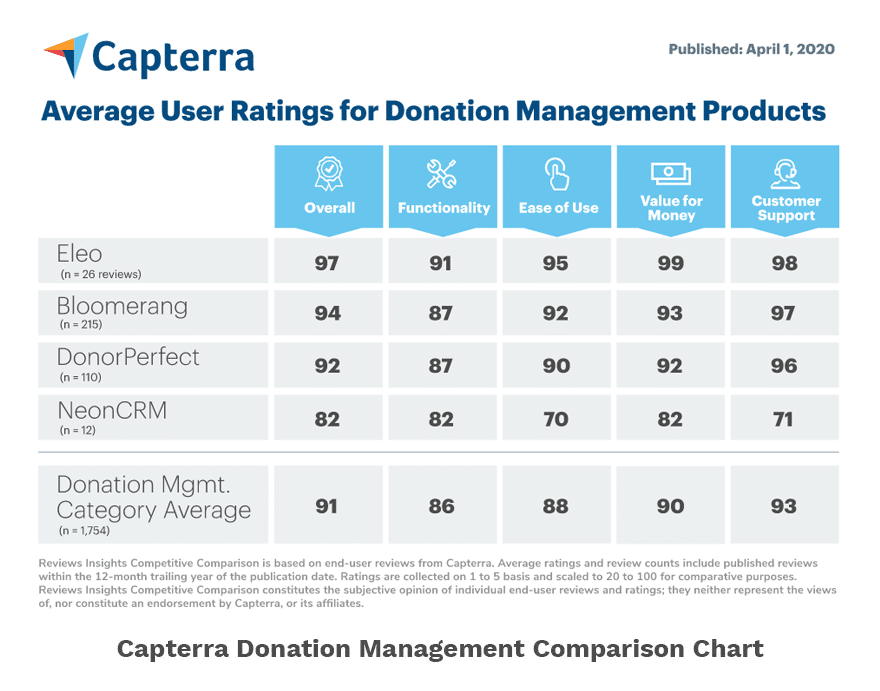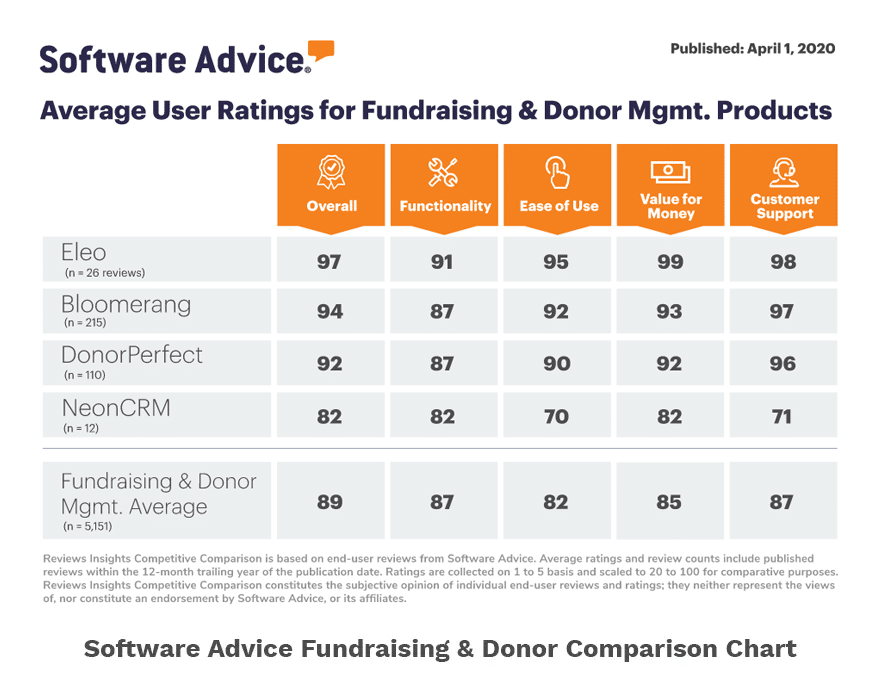Given the fact that the coronavirus will likely be with us in some capacity throughout 2021, how should small nonprofits go about developing a fundraising strategy? Do you tear up the old guidelines and start over from scratch?
Actually, we suggest the opposite. When dealing with unprecedented challenges during uncertain times, the fundamentals of fundraising are critically important. You should adapt and pivot as needed, but the decision-making process should always be driven by sound fundraising principles and best practices.
Take Eleo’s Self-Assessment Quiz – 12 simple questions with “yes” or “no” answers – to make sure you’re on the right track as you head into 2021!
1. Do You Have a Documented Fundraising Plan?
LEARN MORE
Organizations in the corporate and nonprofit sectors always perform better when their plans are in writing. Your
fundraising plan should lay out fundraising activities, roles and responsibilities, event and meeting schedules, policies and procedures, budgets, and more. Be sure to explore options for federal and state COVID-19 funding as part of your strategy.
2. Is Your Mission Still Relevant?
LEARN MORE
Organizations in the corporate and nonprofit sectors always perform better when their plans are in writing. Your fundraising plan should lay out fundraising activities, roles and responsibilities, event and meeting schedules, policies and procedures, budgets, and more. Be sure to explore options for federal and state COVID-19 funding as part of your strategy.
3. Do You Use Donor Management Software?
LEARN MORE
Being able to track, update, and analyze donor information and fundraising activities are essential in any fundraising climate, but especially during a crisis when things have been pushed to a largely virtual world. Resources are tight. Donors engage differently. Small nonprofits should
look for a donor management solution that’s easy to use and includes live support.
4. Is Your Donation Page Clearly Visible on Your Website?
LEARN MORE
Giving should be easy. Choosing how to give and for what purpose needs to be incredibly straightforward. Eleo offers customizable web forms that allow you to turn any web page into a
“donation” page and automatically feed valuable donor data into your donor management software. To ensure an easy experience for donors, we recommend putting a custom ‘Donate’ button at the top of your website’s homepage.
5. Are You Thanking Your Donors in a Timely Manner?
LEARN MORE
The first step to donor retention is a personal
“thank you” letter within 48 hours of the gift. Thanking donors with both a physical letter and an email is recommended. Mailboxes are far less crowded than inboxes, making physical letters more likely to get noticed. However, email is more economical if budgets are tight. Regardless of the format, make your “thank you” letter personal.
6. Have You Organized Virtual Fundraising Events?
LEARN MORE
Nothing beats in-person
fundraising events for stirring passions and building donor relationships. However, these events could still be off the table for a good portion of 2021. Virtual fundraising events are less expensive to execute and more convenient for donors to attend. Look for fun ways to bring donors together and recognize their contributions.
7. Does Your Nonprofit Engage Donors at Least a Few Times a Year?
LEARN MORE
Many small nonprofits worry that they contact donors too frequently when they should focus on whether they engage frequently enough. Donors give for a reason. They believe in your mission and want to see the impact of their gifts. By engaging donors at least a few times a year, you
build stronger relationships and increase donor retention rates.
8. Do You Give Top Donors the VIP Treatment They Deserve?
LEARN MORE
While COVID-19 makes face-to-face meetings difficult, you can still schedule video chats and phone calls. Remember, these
donor relationships drive the success of your nonprofit. During a time when lower level donors may not be able to give, large donors deserve more attention than ever. Every conversation is an opportunity to learn what’s important to your biggest supporters.
9. Do You Keep the Door Open for All Potential Donors to Give?
LEARN MORE
If you’ve ever decided to not reach out to a prospect based on the assumption that they don’t have the means to donate, you could be leaving gifts on the table. Anyone should be able to give to your nonprofit, no matter their income level. Let them decide whether they’re capable of giving instead of shutting the door before they’ve had the chance.
10. Are You Tracking Donor Retention?
LEARN MORE
Retaining existing donors is far less expensive than finding new ones. Using donor management software to track
donor retention will help you increase giving among current and lapsed donors. Eleo has introduced a new donor retention dashboard that measures the number of donors, total gift amounts, and average gift amounts during a specific time period, to calculate donor retention in a simple, easy way.
11. Do You Have A Monthly Giving Program?
LEARN MORE
Many donors could be suffering through financial hardships during the pandemic. In addition to increasing your small nonprofit’s financial stability and predictability,
monthly giving might be more manageable for your donors than a sizable, annual gift. Added bonus – it makes donating automatic.
12. Do 100 Percent of Your Board Members Give?
LEARN MORE
Every person who serves on your nonprofit’s board should be willing to make a meaningful donation. You need to be sensitive to each individual’s circumstances given the current climate, but a financial commitment from all
board members should be a standard expectation.
How’d You Do?
If you answered “yes” to nine or more questions, congratulations! You’re on course for successful fundraising in 2021!
If you answered “yes” to eight or fewer questions, you can still hit your goals! Check out the links throughout this article for additional resources, created specifically for small nonprofits. You’ve got this!








